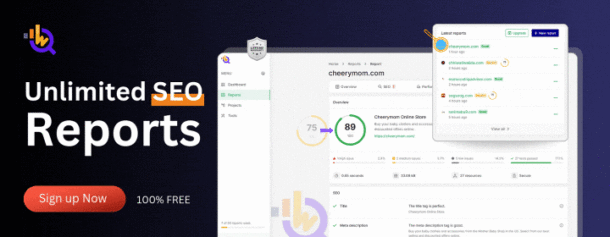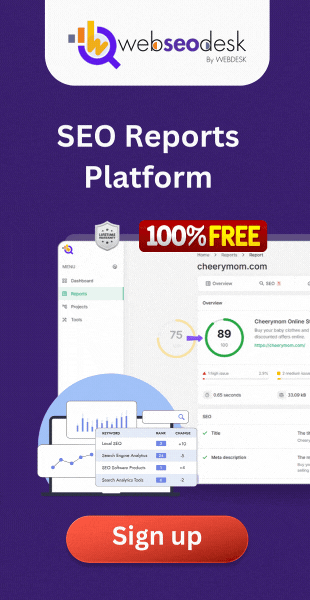For e-commerce sites to raise visibility, draw natural visitors, and drive purchases, SEO—Search Engine Optimization—is very vital. Ensuring that your e-commerce site is search engine optimized will make a big impact on the success of your company because more people than ever are shopping online. This page will discuss the top SEO recommended practices for e-commerce websites to help you boost your search results and attract more clients.
- Improve Product Page
Any e-commerce site is mostly composed of product pages. Every product page should be optimized for SEO using pertinent keywords, thorough descriptions, and excellent photos. Here’s how you accomplish this:
Use Google Keyword Planner or Ahrefs to find keywords that possible consumers are looking for. Put these keywords into your image alt text, descriptions, and product titles.
Specialized Product Descriptions Manufacturer-provided descriptions should not be used since they are often repeated material. Create original and interesting descriptions stressing the characteristics, advantages, and specs of the product.
Refine Images: Use descriptive alt tags using pertinent keywords and compress photos to increase page load speed. This aids in accessibility and picture search results.
- Fix Site Navigation and Structure
A well-organized website enhances user experience and lets search engines more quickly crawl and index your pages. Here’s how you might maximize your site’s architecture:
Sort your website according to categories and subcategories that accurately represent your product line under a clear hierarchical structure. If you sell clothes, for instance, set aside sections for men’s, women’s, and children’s wear.
The breadcrumbs are Put breadcrumb navigation on your product pages into use. This not only makes consumers’ navigation of your website simple but also gives search engines a clear knowledge of the structure of your website.
Structure of URL: Make sure your URLs incorporate pertinent keywords and are clear and understandable. For instance, substitute “example.com/men-s-shirts/blue-cotton-shirt” for a URL like “example.com/product123.”
- mobile optimization
Ensuring that your e-commerce website is mobile-friendly is essential for both user experience and SEO, given most people buy on mobile devices. Google’s mobile-first indexing assigns search results top priority for mobile-friendly websites.
Make sure your website responds and fits very well across several screen sizes. On smaller devices, mobile optimization also include quick loading times, easily readable text, and simple navigation.
- Optimization of Page Speed
For SEO, page speed ranks rather well. Pages with slow loading may provide bad user experience and high bounce rates, affecting your rankings. To maximize page speed, you might:
Compress Images: Your site may slow down from huge image files. Cut image size using TinyPNG without sacrificing quality with tools like these.
Use browser caching to let some of your website’s elements be kept in a visitor’s browser, therefore accelerating the loading time on next visits.
Minify HTML, JavaScript, and CSS to help load times and cut file sizes.
- Make use of structured data—a schema markup.
Schema markup, sometimes known as structured data, lets search engines better grasp the material on your page. Product schema markup will improve your listings in search results for e-commerce sites. Rich snippets may show this, including product prices, ratings, availability, and more.
Structured data adds to your product pages and helps search engines show your products with extra information straight in search results, improving visibility and click-through rates.
- Create quality backlinks.
SEO rankings heavily rely on backlinks from credible websites. Creating premium backlinks for e-commerce sites might help to raise search results and domain authority.
Build backlinks by:
Guest blogging for other credible blogs in your field of business should involve links to your product pages.
Product Comments and References: Review your products with bloggers or influencers, then link back to your website.
Creating Shareable Content: Create materials including infographics, tutorials, or blog entries likely to be shared and linked to on other websites.
- Perfect for local SEO
Optimizing for local SEO is absolutely important whether your e-commerce company services particular local areas or has a physical store. Several techniques consist of:
To raise local search result visibility, set up and maximize your Google My Business page.
Local Keywords: Add location-based keywords—like “buy shoes in [city],” or “best local electronics store”—into your work.
List your company in pertinent local directories to improve local backlinks and raise awareness of it.
- Emphasize UX (user experience).
SEO depends on user experience in an indirect yet crucial manner. High-quality user experience websites inspire visitors to remain longer and interact with more pages, therefore enhancing the rankings.
Clear menus, filters, and search capability help consumers to quickly locate what they are looking for.
With strong and unambiguous calls to action (CTAs), such as “Add to Cart” and “Checkout,” guide consumers toward conversion.
Providing live chat choices can help to improve user experience and increase involvement by means of customer support.
Finally,
For e-commerce sites, SEO calls for a mix of on-page, technical, and off-page techniques to be successful. Following the best techniques described in this article—such as optimizing product pages, improving site structure, strengthening mobile optimization, and generating quality backlinks—you will increase the exposure of your website and draw more possible consumers. Your online store can stand out in search results and increase sales with the correct SEO strategy.












0 Comments